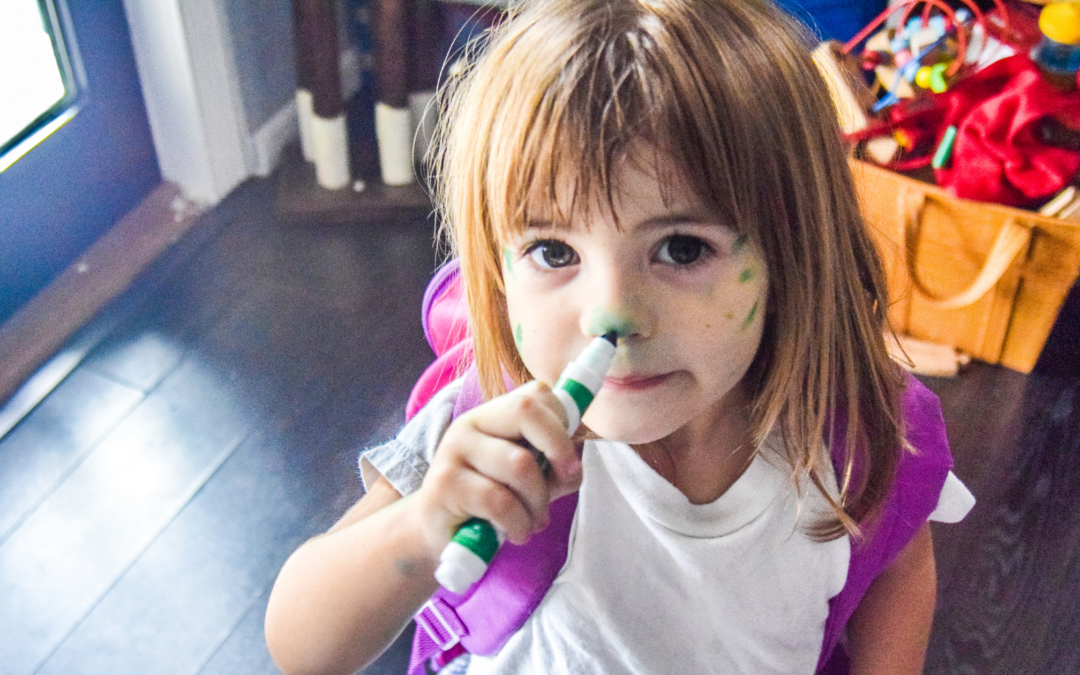The Terrific Twos
Reframing the ‘Terrible Twos’ as the ‘Terrific Twos” and how a shift in attitude can change everything.
The “Terrible Twos” is a phrase that often strikes fear into the hearts of new parents, conjuring images of tantrums, defiance, and overwhelming frustration. However, what if we could shift our perspective and see this stage not as a period to endure but as a beautiful phase of growth and development?
Welcome to the concept of the “Terrific Twos.” By reframing this pivotal time in a child’s life, we can better appreciate the remarkable strides in independence, communication, and personality that characterize the second year. Embracing the “Terrific Twos” allows us parents to celebrate the wonder and excitement of early childhood, transforming challenges into opportunities for connection and learning.
Understanding the Developmental Milestones of Two-Year-Olds
Children hit some big developmental milestones around the age of two. Cognitively, two-year-olds are little explorers, constantly absorbing information about the world around them. Their brains are buzzing with activity as they start to understand cause and effect, solve simple problems, and engage in more complex play. You might notice them experimenting with different ways to stack blocks or trying to figure out how to fit shapes into the correct holes. These seemingly small activities can be a huge deal for them.
Language also takes off in the second year. It’s amazing how quickly two-year-olds pick up new words and start stringing them together. Suddenly, they have so much to say and can’t seem to stop!
Social and emotional growth is also significant at this age. Two-year-olds continue to form strong attachments, and they may show affection more openly. They also start to develop a sense of independence, which is why we hear a lot of “No! Me do it!” This is the time when they start to play alongside other children. However, sharing doesn’t quite come naturally yet. Emotional expressions also become more varied and intense as they develop their sense of self.
Motor skills also see a big boost. By age two, most children are quite mobile, running, climbing, and getting into everything. This newfound freedom gives them the confidence to explore their world more independently. And, unfortunately, they don’t care if that means more bumps and bruises along the way.
The Negative Perception of the “Terrible Twos”
Interestingly, the term “Terrible Twos” is not universal! Many cultures don’t consider toddlerhood difficult. It is very much an American/Western phenomenon. Sadly, it paints a rather bleak picture of this stage, focusing on the difficulties rather than the developmental strides children are making.
Admittedly, there is a range of common challenges during this stage. Temper tantrums can come out of nowhere, triggered by the smallest frustrations. These outbursts can be exhausting, especially when they happen in public. Testing boundaries is also typical as two-year-olds begin to assert their independence and explore their limits. Rapid mood swings are another hallmark of this age, with toddlers quickly shifting from joy to tears and back again, leaving parents feeling like they’re on an emotional roller coaster.
While this all does indeed sound “terrible,” when we give it that label, it can significantly impact our interactions with our children. When parents expect this time to be terrible, they approach it with more anxiety and frustration, which can affect their interactions with their children. This negative mindset can inadvertently exacerbate a child’s behavior and self-perception.
Reframing to the “Terrific Twos”
Reframing the “Terrible Twos” to the “Terrific Twos” can bring a world of benefits for both you and your child. I know that it may not be an easy thing to do. However, this shift in mindset can bring about more positive interactions between you and your child. It will help to foster a nurturing environment where a toddler feels understood and supported. By focusing on the exciting aspects of this stage, you can celebrate your child’s milestones and enjoy the journey together instead of simply enduring it.
When parents see tantrums and defiance as normal parts of growing up, they can respond with patient correction. This approach helps children learn to manage their emotions and build resilience. Highlighting the exciting aspects of the “Terrific Twos”—such as their increased curiosity, exploration, and independence—allows parents to recognize and encourage their child’s natural drive to learn and discover the world around them.
This perspective not only enriches the parent-child relationship but also lays a solid foundation for the child’s future growth and self-confidence.
Strategies for Embracing the “Terrific Twos”
Embracing the “Terrific Twos” starts with a few parenting techniques. For example:
- Positive reinforcement
- Setting clear and consistent boundaries (and sticking to them)
- Offering limited choices to foster independence
- Engaging in vibrant conversations
- Reading together regularly
- Modeling empathy and sharing for your child
Praising your child for good behavior and small achievements can go a long way in encouraging more of the same. Setting clear and consistent boundaries helps your toddler understand expectations and feel secure, even when they’re testing limits. Offering simple choices whenever possible fosters a sense of independence, allowing your child to feel more in control and reducing the likelihood of power struggles.
Another key strategy is encouraging language and communication development. Engage in conversations with your toddler, asking open-ended questions and listening to their responses. This not only helps build their vocabulary but also strengthens your bond with them. Read-aloud time can also support language skills while creating a cozy, enjoyable routine. Books introduce new words, ideas, and concepts, providing a great opportunity for snuggles and shared attention.
By incorporating these strategies, you can create a more positive and supportive environment that helps your child thrive during this exciting and dynamic stage of development.
Real-Life Success Stories
I asked Homeschool Connections parents for their insights on this topic. The response was really positive and there was a lot of great advice shared…
How Montessori helped to see two-year-olds in a new light:
Montessori taught me to “wonder about the world with children” and that made all the difference!! Delighting in their expressions, movement, and discoveries made life richer, and picking the right limits and staying ahead of their physical needs was always the parent’s challenge to uphold. Fun memories! ~Lauren
Recognizing why meltdowns happen:
I’ve found that the meltdowns are usually from frustration with communication. They know what they need or want or what ought to be happening, but don’t have the words to get that across. ~Sarah
Give limited choices:
I have a two-year-old right now (she’s my fourth toddler!) Tantrums are often a result of a child wanting more independence, which is only natural as a child grows up. I try to slow down as much as possible to allow her to develop. For example, she throws a giant fit in the mornings if I rush to pick up her clothes and get her dressed. However, if I give her a choice between two t-shirts (limited choices!!), she enjoys the “getting dressed” process. She also likes to “brush her teeth” before mommy or daddy “get a turn.” ~Aubrey
Rewarding good behavior:
Also, many toddlers do not like to “come” right away. I find that small rewards are really helpful in convincing a toddler. If I need her downstairs (for a change or to leave the house), I will sometimes offer her a small treat (we like M&Ms). She comes quickly and eagerly! (I realize that offering sugar might not be everyone’s first choice… it works for us though). ~Aubrey
A dad’s perspective:
Temper tantrums, rare as they were, were never rewarded. Fussing earned time in their room, until they stopped… we gave them the power to decide when they were done. They usually stopped before they got there or got the nap they were needing to begin with. My wife stayed home to be with them, so they had lots of stability and consistency. My wife and I backed each other up. ~David
How to make clean-up fun!
One example, when the kids detonate the toy box and it’s time to pick up, I start grabbing toys and throwing them in the bin. “I can get more legos than you can – one, two, three, four, I”m winning!” They all (and there are many) rush to play this game. Sometimes I move the bin around and challenge them to throw the toys in from a distance. I don’t have to force anybody, including the two year olds. ~Susie
On reducing corporal punishment:
I found that I did not need to use punishments at all with my kids. I just needed to connect with them and communicate with them rather then trying to control behaviors. They knew I was on their team and they trusted me, and we just worked things out together. And they have all grown into beautiful human beings. ~Rebecca
What about all that energy?!
I love leaning into their boundless energy and exploring the world! As long as they feel safe and are fed and well-rested, their natural curiosity is a joy to indulge by explaining all the things and reading all the books! The trick is that I have to be okay with not getting “my stuff” done and remembering that it’s just a season of that child needing to take tons of my attention! ~Jenny
My own experience is similar. Taking delight in watching their brains develop and seeing the people they were developing into helped me to be patient and consistent in guiding and disciplining my two-year-olds.






